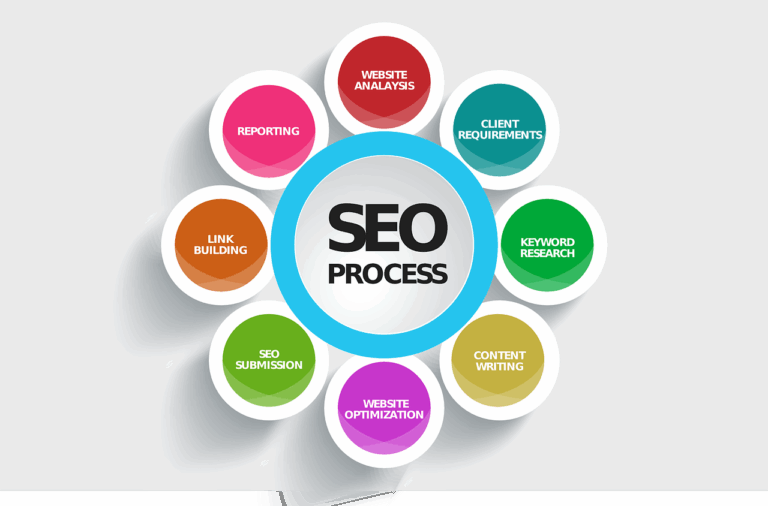

The Unseen Graveyard of Startup SEO
“Visibility sells, not just vision. If no one sees your brilliance, it may as well not exist. Optimize or vanish."
Here's the raw, unvarnished truth: Startups often launch with meteoric ideas, futuristic products, and lean war rooms full of talent—but they fizzle into silence online. Why? Because no one sees them. They’ve poured energy into development, pitches, and packaging, but neglected their digital oxygen—Search Engine Optimization (SEO).
This blog dives deep into why startups repeatedly crash and burn at SEO, the expensive pitfalls they unknowingly embrace, and how you can architect a growth engine powered by smart SEO—even on a bootstrap budget.
Did you know: Over 90.63% of web content gets no traffic from Google. Let that sink in.
Mistake #1: Treating SEO Like a Checkbox
Many startups approach SEO like a weekend project—write a few blogs, toss in keywords, submit a sitemap, and call it a day. Wrong.
SEO isn’t a campaign. It’s an organism.
Search engines morph, algorithms mutate, and competitors grow teeth. What worked last quarter can fade fast.
📌 The Fix:
Forge a rolling roadmap:
• Quarterly SEO sprints
• Monthly keyword recalibration
• Routine landing page refinements
• Consistent technical audits
Think of SEO like fitness—you don’t get strong by lifting once.
Mistake #2: ignoring technical search engine optimization — Technical SEO
SeoYou might have a world-class SaaS product, but if your site is crawling like a snail and bleeding errors behind the scenes, Google will ghost you.
SEO isn’t a campaign. It’s an organism.
Search engines morph, algorithms mutate, and competitors grow teeth. What worked last quarter can fade fast.
⚠️ Common Culprits:
• Sluggish load speed
• Mobile-hostile layout
• Broken internal links
• Shoddy or missing XML sitemaps
📌 The Fix:
Deploy tools like:
• Google PageSpeed Insights
• Screaming Frog
• Ahrefs Site Audit
Bring in a developer. Squash crawl errors. Minify assets. Implement structured data (Schema.org). Your backend should be bulletproof.

Mistake #3: Mimicking Competitors Without Context
Startup founder logic: “They rank #1. Let’s copy their strategy.”
SEO is not imitation—it’s positioning.
Bad play. You’re mimicking without understanding. They might have:
• A five-year head start
• A domain dripping with backlinks
• A full-stack content team
📌 The Fix:
Conduct a competitive gap analysis using SEMRush, Ubersuggest, or SpyFu. Identify what they’ve missed—then own it.”Target niche keywords that matter to your Pacific audience, and address their unanswered questions.”
Mistake #4: Obsolete Tactics and Keyword Stuffing
Remember when spamming “best CRM software” 40 times shot you to Page 1? Yeah, Google buried that era.
Today, the algorithm favors search intent and reader-first language. Overloading keywords now triggers penalties, not performance.
📌 The Fix:
• Use semantic variations
• Optimize for contextual relevance
• Tools like SurferSEO and Clearscope can guide structure without stuffing
Write for humans. Respect the algorithm.
Mistake #5: Vague Content That Solves Nothing
We’ve all seen it—generic blogs like:
• Use semantic variations
• Optimize for contextual relevance
They lack depth, personality, and utility.
🚫 These articles tank because they don’t:
• Solve real problems
• Offer unique insight
• Inspire trust or sharing
📌 The Fix: Craft authority content using proven frameworks:
• Problem → Solution → Outcome
• Case Study + Action Plan
• Step-by-step How-To Guides
Ask yourself: Would I bookmark this or send it to a colleague on Slack?
Mistake #6: Skipping High-Quality Backlinks
Backlinks are digital trust signals. They say, “This content’s worth referencing.” Yet many startups:
• Buy sketchy backlinks
• Ignore PR
• Neglect outreach altogether
SEO is not imitation—it’s positioning.
📌 The Fix: Earning backlinks = earning trust. Try:
• Guest posting on industry sites
• Founder interviews on podcasts
• Original research
• Strategic partnerships
Use platforms like Help a Reporter Out (HARO) and Terkel to get cited in respected media.

Mistake #7: No Metrics, No Momentum
Startups often run SEO blind—no tracking, no KPIs, no reporting. That’s like flying a plane with your eyes closed.
📌 The Fix:
• Set up Google Analytics 4 with event tracking
• Use Google Search Console for visibility insights
• Build visual dashboards in Looker Studio
Monitor:
• Organic traffic
• Keyword movements
• Bounce rates
• Conversion metrics
• CTR on key pages
Without tracking, there’s no tuning.

The Winning Framework: How Startups Can Actually Win at SEO
Let’s flip the script. Here’s a framework that’s engineered for startup agility and big-league impact:
1. Begin With User Intent
“Find out what your ICP (Ideal Customer Profile) is searching for on Google 😊” is Googling. Interview customers. Dig into Reddit, Quora, and YouTube comments.
2. Build Topic Clusters
Abandon random blogs. Cluster your content:
• Pillar: “The Ultimate CRM Guide for Startups”
• Clusters: “CRM vs ERP”, “Best Open-Source CRMs”, “CRM for SaaS Startups”
3. SEO-First Landing Pages
Every core feature or service page should be search-optimized:
• “Best HIPAA-Compliant Cloud Storage”
• “CRM for Remote Teams”
Include FAQs, schema markup, and internal links.
4. Consistent Content Cadence
Commit to 2–4 valuable blog posts monthly. Distribute across:
• LinkedIn
• Medium
• Email newsletters
• Reddit communities
5. Link Building Starts Now
Aim for 5–10 backlinks/month from:
• Industry blogs
• SaaS marketplaces
• Tech podcasts
• Local journals
6. Work in SEO Sprints
Break into 6-week agile cycles:
• Week 1–2: Audit & Strategy
• Week 3–4: Content Creation
• Week 5–6: Distribution & Link Building
This rhythm keeps your efforts aligned and efficient.
Case Study: From Crickets to Claps — A Real Startup Story
Client: A SaaS HR Tech Startup
Problem: 100 monthly visits, 0 organic leads
Approach:
• Identified 5 critical HR pain points
• Deployed 12 blog clusters around each
• SEO’d the pricing & feature pages
• Landed 18 backlinks through niche guest posts
📈 Results in 6 Months:
• 4,500+ organic visitors/month
• 800+ email signups from SEO
• Page 1 rankings for “HR software for startups”
"Smart SEO = silent rocket fuel."
Final Thoughts — SEO Isn’t Magic, It’s Momentum
“Startups sometimes ail at SEO because they don’t plan for it from the Starting stage. But done right, it’s your most scalable, cost-effective growth engine.
🚀 If your startup’s ready to rise from the graveyard and become a search magnet…
✅ Book Your Free 30-Minute Strategy Call
Let’s analyze your SEO, find the blind spots, and design your first 90-day growth sprint.



